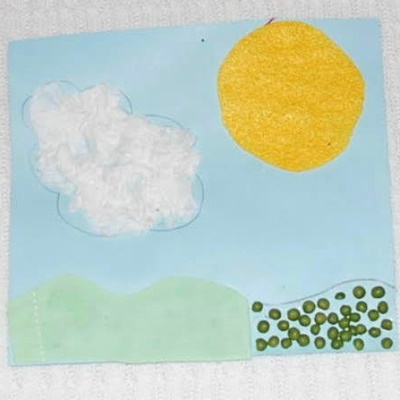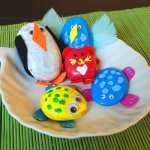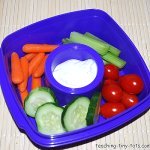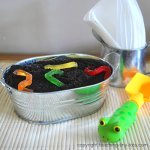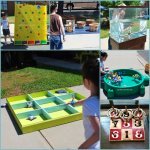Touch and Feel Book
Description
Touch and Feel books are fun for young kids. It provides visual and tactile interest for young children. It is very important for young children to hear lots of different vocabulary so "reading together" is a great way to reinforce this. There are a number of board books designed to capture young children's attention with bright colors and different textures. We have some of our favorites listed below. This activity is to make our own Touch and Feel Book using things we had around the house. You could even just do a series of pictures with different textures. It will give children a hands on experience as well as a tactile one. It will also help develop fine motor skills using glue, scissors and placement of materials.Materials
- Cardstock or construction paper cut to size of choice
- Pencil, Scissors
- Elmer's Glue or our choice is Aleenes Tacky for better hold.
- Sponge brush for spreading glue evenly.
Ideas for textures:
- Felt, velour, corduroy, etc.
- Cotton
- Dried Beans, Oatmeal
- Sand or pieces of Sandpaper
- Glitter or Glitter Glue
- Spongy filled shapes
- Foam Shapes
- Small pom poms
- Ribbon, yarn or string
- Pipe cleaners
- Foil (smooth or crumple lightly and open for more texture)
- Waxed Paper
- Parchment Paper (crumple and can paint or use markers to create neat effects)
- Saran Wrap (ocean pictures to make water)
Steps
- Draw simple picture with pencil. Or you can print a picture from a coloring site.
- Lay out your items. Small dishes work well for beans, beads and confetti. Decide what textures to use.
- Put glue in a small area. Using a sponge brush can spread it evenly so items can adhere easier.
- Bind Book using staple and use colored tape over the staples or hole punch 2 holes and tie with a ribbon, yarn or raffia.
Tips and Suggestions for Touch and Feel Books
- If the book is for a very young toddler, make sure pieces are glued well. A craft glue will have a stronger hold.
- Make sure you read the book with your child and discuss textures. That way you are also monitoring any pieces that get loose.
- Make a page a day rather than trying to complete the book in one day!
- A suggestions from a reader was cotton pages backed with pylon and sew things to the cotton page. pages then become washable. two pages are stitched together and sewn for a binding. a little more work to start with but it lasts a long time.
